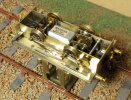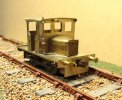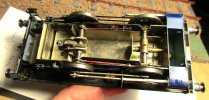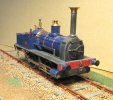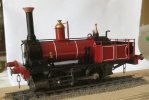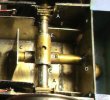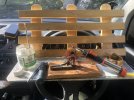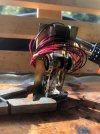Ade,
I understand where you are coming from. My first pugs were sprung on all wheels and their performance running wise was good. However with the short wheelbase and long overhangs they were very unrealistic in motion as the body tended to pitch forward and back in a nodding donkey sort of way! I had used commercial hornblocks and guides with coil springs on which the loco rode.
I now favour 3 point suspension on my pugs and find running qualities just as good but without the fore and aft motion.
Here is a photo of one of my more recent pugs sans body. I hope it’s clear enough but photographing black things isn’t that easy.
View attachment 165405
The 0-4-0 is driven on the rear axle which has bearings fixed rigidly in the frames. The front axle runs in axleboxes and guides, just a brass block and two pieces of brass angle, with about 1/2 mm up/down movement. The boxes are held out against the frames with a piece of brass tube. At its centre a pivot pin, brass wire, soldered to the front spacer, sets ride height and permits the axle to rock. I have soldered a small piece of flat sheet on the tube on which the pin bears. That was used to fine tune height, by trying different thicknesses until the loco was level. It also stops the tube rotating. The hole to the left is simply for lubricating the axle.
I hope this helps,
Ian.


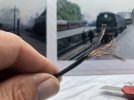
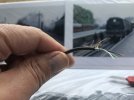
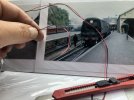
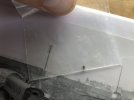
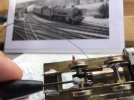
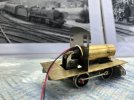
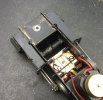
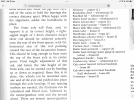

 I’ve got plenty of time!
I’ve got plenty of time!